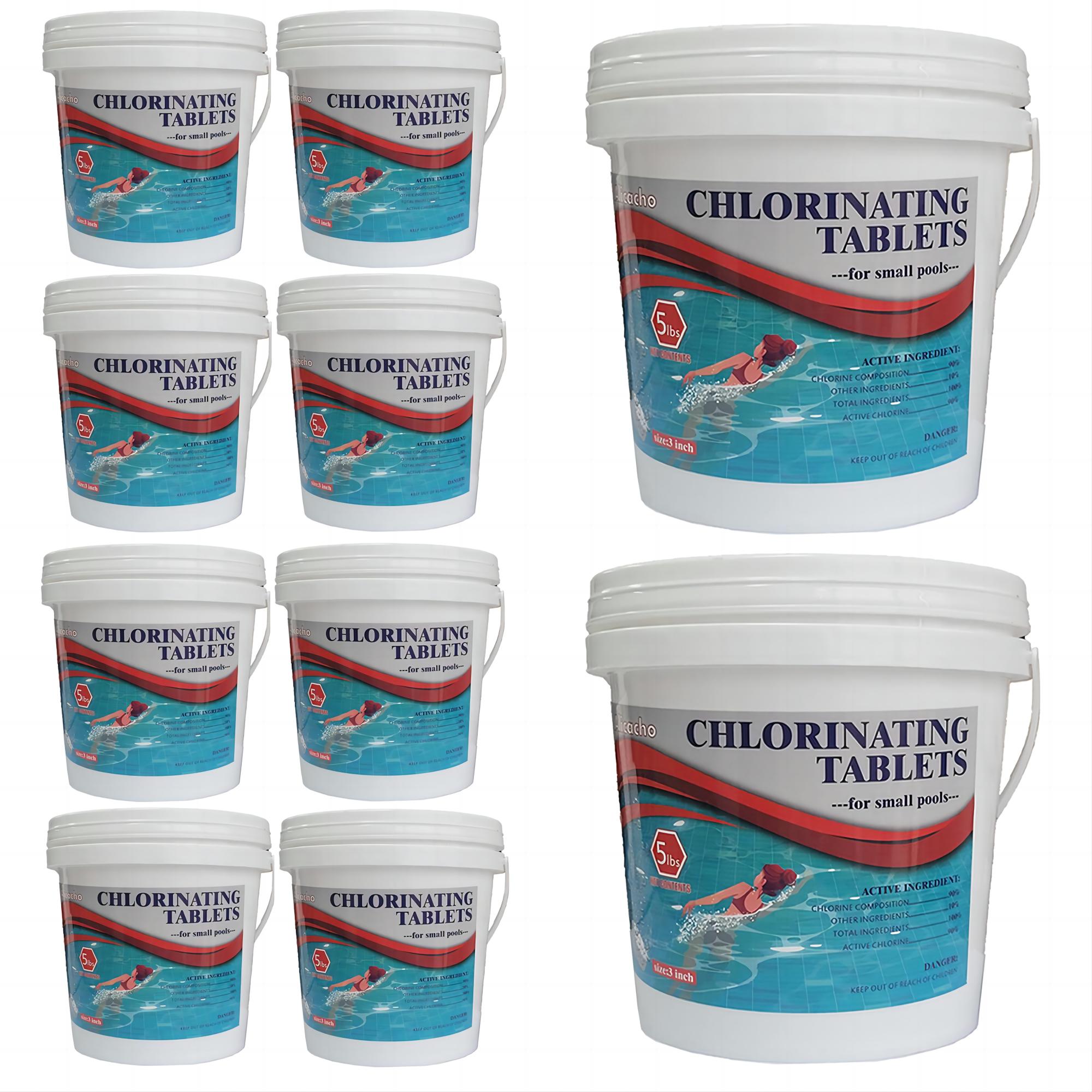If you are a pool owner, one of the responsibilities that you should be doing is to always make sure that your pool is well maintained. Every pool needs regular maintenance, everything is all about balance, and we are going to know more, as we go along the post, below.
One of the main components of pool maintenance is pool water treatment. Once you have made sure that all the levels of necessary water chemicals are all in balance, and the water chemistry is nothing but perfect, sparkling clean water is never too far to achieve. It is also needed to remember to consider all the seasons that always change and may affect the water chemistry.
If you want to maintain the cleanliness of your pools, it is essential to learn more about pool water treatment. It will also let us be aware of the different chemicals and how levels of these chemicals can be maintained and achieve safe, clean, and healthy pool water.
Part 1. Getting To Know Pool Water Chemistry
One of the basics of pool water treatment is getting to know pool water chemistry better. Once everything is made sure to be balanced, water is clean and safe to swim into. There is a lesser possibility of encountering green water, cloudy water, or harmful bacteria. It is important to secure testing kits that will help you figure out levels of chemicals and components levels of your pool from time to time. To help you keep some ranges in mind, we have enumerated some of the most essential chemicals and components that you need to monitor, below.
- Calcium Hardness
You must monitor calcium hardness, the plaster finish or vinyl liner of your pool may be damaged in case calcium hardness is too low. It is also not good to have too high, as a result, you will be scraping away calcium deposits that are too tough to remove. The needed range of calcium hardness that you have to maintain is between the range of 200 and 400 ppm.
- Phosphates
Have you noticed your pool is cloudy and green? If you are, you may want to check if the level of phosphates in your pool is too high. Algae are likely to grow in pools that have high phosphates, thus making it hard to maintain needed pool water chemistry.
- pH
To keep balance in your pool, pH be around 7.2-7.8. Once pH is not within range, too high or too low, possible pool issues such as corrosion and algae buildup may be experienced.

- Chlorine
Chlorine is vital for eliminating germs in pools, working effectively in minutes. CDC recommends pH 7.2–7.8, free chlorine 1 ppm (pools), 3 ppm (hot tubs). If using cyanuric acid or stabilizers like dichlor/trichlor, maintain free chlorine at least 2 ppm in pools.

- Alkalinity
The range of total alkalinity that you have to maintain is between the range of 120 and 150 ppm. Once too low, the pH of the pool is affected, and stains on surfaces are likely possible. If too high, it is possible to encounter cloudy water.
When it comes to sanitizers, there are ranges that you have to consider as well. Some of these are:
|
Sanitizer |
Range |
|
Chlorine |
1 to 3 ppm |
|
Bromine |
3 to 5 ppm |
|
Biguanide |
30 to 50 ppm |
|
Mineral (chlorine back up) |
0.5 ppm |
Aside from the chemicals and pool components that must be monitored, there is another process that contributes a lot when it comes to keeping a good pool water chemistry. This one is called shocking.
Shocking your pool must be done once or twice every week depending on how frequently it is utilized by swimmers. This process will have you overload your pool water with sanitizer to kill all the bacteria, organic matter, or contaminants present in your pools. As part of your pool water treatment activities, shocking must also be performed to help you maintain the pool as you like. Aside from heavy usage, there are other conditions when you should consider shocking your pool, these are:
- After dealing with an algae breakout.
- After encountering a sudden spill of chemicals or there has been an unexpected contamination.
- After a heavy rain or an intense storm.
Part 2. What Are The Main Reasons For Doing Pool Water Treatment?
There are reasons why pool water treatment should be done. These objectives are needed to be understood to achieve a safe, healthy, and clean pool.
- Make sure that algae growth is too far away.
- Avoid the surroundings of the pool to corrode.
- Avoid undesirable smell or taste in your pool water.
- Make sure that the pool water is free from any bacteria that can be harmful to users.
- Avoid the build-up of scale in your pool.
- Make sure that the pool water is not irritating and toxic to swimmers.
These are the objectives of the main reasons why pool water treatment is important to focus your attention on.
Part 3. How do You Treat Swimming Pool Water?
To ensure that pool water treatment is effective, there are many things to keep in mind. One of the main things that need to be ensured in owning a pool is to make sure that it has a recirculation system that has a pump, valves, fittings, piping, pipe connections to the inlet and outlet of the pool, disinfecting equipment, and a lot more. Also, there are points to keep in mind, and these are:
1. The Recirculation Pump
This pump is responsible for the pulling of water from your pool, and water is being pushed to the filter, which pushes the water back to your pool. Your pump must be able to pump enough water through the system to make sure that the required number of turnarounds are provided.
2. pH Control
In a pool, there must be feeders for the pH. These feeders must be positive and negative displacement types and can be adjustable from zero to the full range. To prevent discharge while the recirculation pump is not functioning, it must have an electrical interlock with your pool’s circulation pump.
3. Flow rate and Turn Around Time
Any pool can be polluted at different rates. If the water is shallower, there can be more bathers per cubic meter, and if your pool is open, surface pollutants can be greater compared to indoor pools. It is a must to make sure that the filters of the pool are enough to handle the turnover rate that is required to maintain clean, and clean water. The recommended turnaround time for a public pool is 4 hours, based on the international guidelines and standards.
4. Pre-Filtration System
One of the main things that you have to make sure that you have on your pool is the filtration system. It is the very heart of your circulation system. A pre-filtration system can prevent hair, foreign objects, and lint from being able to reach the filters and the pump. It is good to invest in a good pre-filtration system to avoid machine breakdown in case impurities are not properly filtered out.
5.Oxidation and Disinfection of Swimming Pools
Another part of the pool water treatment is to make sure water disinfection is integrated into your pools. It is very essential and must be part of the pool water treatment practices pool owners do. There must be a strict standard to make sure pool water is always clean. It is needed to disinfect water to prevent organisms from one person to another and make sure that the growth of bacteria and algae in your pools won’t happen.
Sanitation is needed to kill microorganisms and correct the pH of the pool. Some of the effective pool sanitizers are chlorine, ozone treatments, UV light, and many more.
On the other hand, oxidation kills organic contaminants that are not usually captured by the filters. These must be eliminated before they react with disinfection byproducts.
Part 4. To Summarize It All
It would not be difficult to maintain a pool as long as the pool owner is also dedicated. A maintenance checklist must always be ensured and prepared based on the needs of the pool. Once all the guides and basic procedures for pool water treatment are followed and studied, chemical and component levels will make a balanced pool water chemistry, and crystal-clear water with no signs of any contaminants is achievable! After all, it is a satisfying feeling to soak into a clean, safe, and healthy pool after working tiresome hours the whole day!



